In Broome we only have one species of Gull-the Silver Gull Larus novaehollandiae. It is a well-known bird that is commonly called “Seagull” and they are far from shy. They are found not only on the beaches of Broome, but in the shopping area and at the rubbish tip. They are in larger numbers during the tourist months of July to September and they don’t go hungry! They are often in flocks of several hundred birds at high tide and it is not unusual to see a bird with missing feet. We presume they lose their feet to fish, as the red lure must be quite enticing! They continue to hop around regardless and it does not seem to slow them down.
The Silver Gull has red legs and bill only when it reaches adulthood at about 3 years old. Prior to this it will have black eyes, bill and legs and quite a mottled wing pattern. It can appear to be a different species due to the distinct differences. They will often roost amongst the terns and if the flock is disturbed they are the least likely to move…..probably due to the fact they are thinking of food rather than any threat! They love to hang out in town around the Fish and Chip shops for some reason!
Juvenile Silver Gull on the left
Silver Gulls of various ages
In the photograph above you can see the gull on the far left is juvenile by it’s plumage and then the middle gull is heading for adulthood. The gull on the right has nice red legs and bill and is a full adult bird.
Adult and sub-adult Silver Gull
Gulls will roost on rocky outcrops, beaches or head for town and sit on the sports grounds lawns. They are known to cover some distance and are extremely opportunistic and can appear quite aggressive if they are trying to get food.
Roosting Silver Gulls on high tide
If a Silver Gull goes to the rubbish tip there can be some good evidence as to where it has been by it’s appearance. Ideally all rubbish is covered as soon as possible to prevent birds from getting it onto their feathers.
A Silver Gull returns to the beach after a rubbish tip visit
We have also recently seen a Silver Gull with an awful looking growth on it’s foot, though it did not seem too bothered-tough bird!
Silver Gulls are only a medium sized gulls and there are much larger gulls in the south of the country-namely the Pacific Gull and Kelp Gull. You can clearly see from the photograph below of two Pacific Gulls Larus pacificus in Tasmania earlier this year that they are a much larger species!
Gulls are easily overlooked, which is probably why I have not mentioned them yet! On the list of birds easily identified by a young child you would have to have Seagull on the list! Parents with little bird knowledge will tell a child that any species of duck is a duck and any species of gull is a Seagull!! This covers all species in both the duck and gull family in most households!

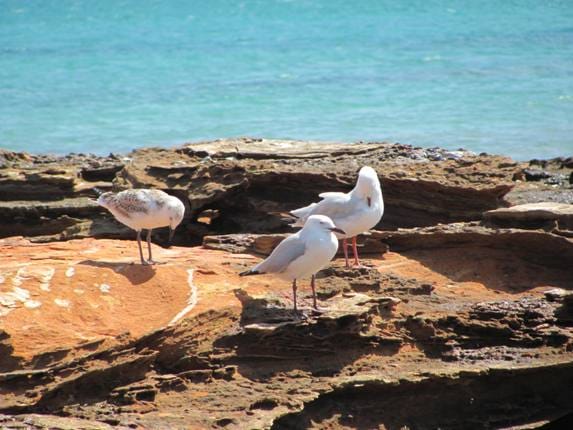

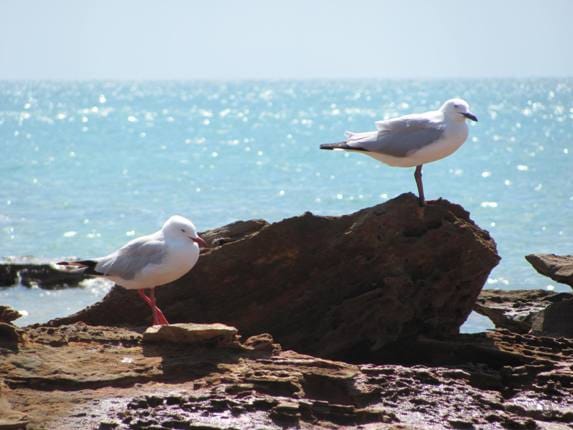
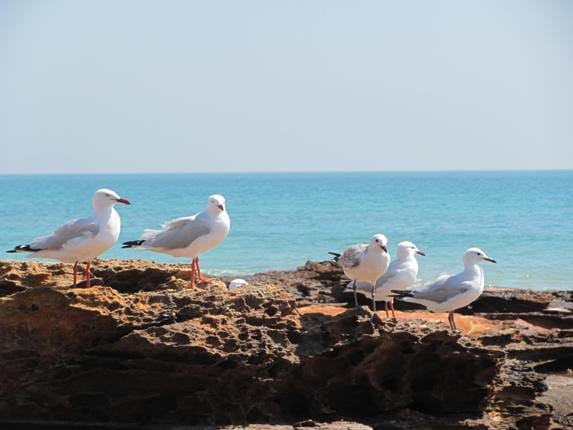
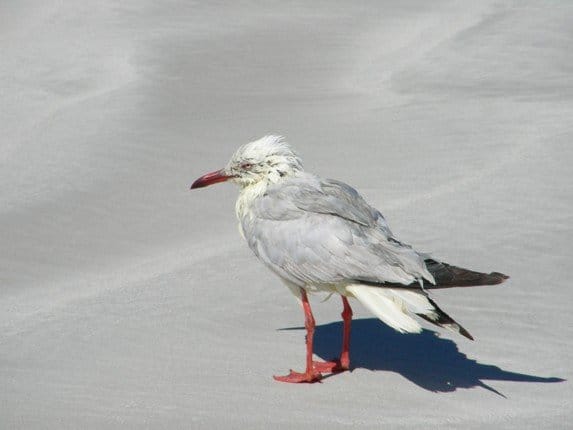
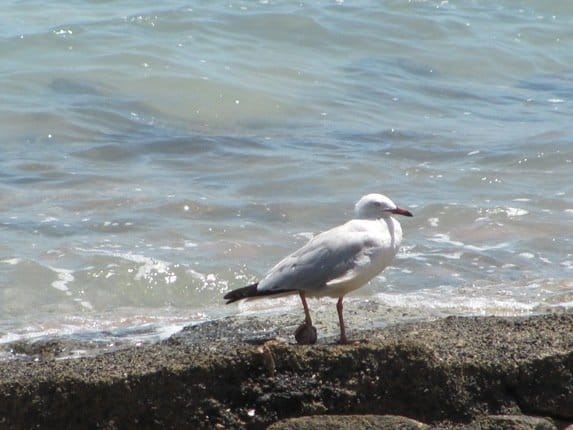
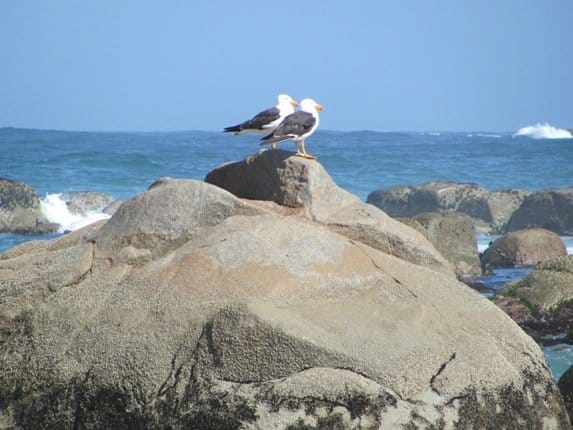










Depending on who you ask, we have Silver Gulls here in New Zealand, or we have the closely related Red-billed Gull. I’m thinking of getting some photos of both species and doing a quiz here on the blog!
Quiz-good idea!!
Gulls are severely underrated and under-recorded.
Whenever you look at the reports people write about a day’s birding at a wetland / coastal marsh, you will see exact numbers of waders, with each and every bird counted directly no matter how many (as in 2373 Dunlins instead of “around 2300”). Then you will get rough estimates of ducks, as in “around 250 X, 500 Y, 750 Z”. And the post will finish – sometimes, far from frequently – with a short sentence on the gulls: “Also present, Silver and Kelp Gulls”.
Shame!
My very first specific memory of a bird, and I must have been around 5 or 6 years old, maximum, was a Herring Gull perched on a pole in a harbour on the coast of Brittany. I was seriously impressed by its size and the beauty of its colouration, the gentle grey and white, with the yellow-and-red bill.
Such wonderful birds.
@ Jochen-you were lucky to not be carried away by such a big bird!Yes, they are ignored a lot until they get up to no good…they were suspected of nipping out to offshore islands-Lacepedes-about 150kms off the coast here and helping themselves to tern eggs and then people became interested in them and tried to establish if it was Broome Silver Gulls up to no good or someone elses!
@ Jochen-10881 Herring gulls flew south of Spurn Point on Sunday-not too far from you! http://www.spurnbirdobservatory.co.uk/sightings/november11.html
Somone is counting them carefully!
Ah, well, but sometimes these numbers add up like this:
“Whoa,huuuuuuge group, must be 10,000!!”
“Look, there, a couple more, wait … around 800, no?”
“Yeah, guess so, there’s another 80”.
Birders finish day, walk back to car, note a single gull at the edge of the parking lot.
🙂